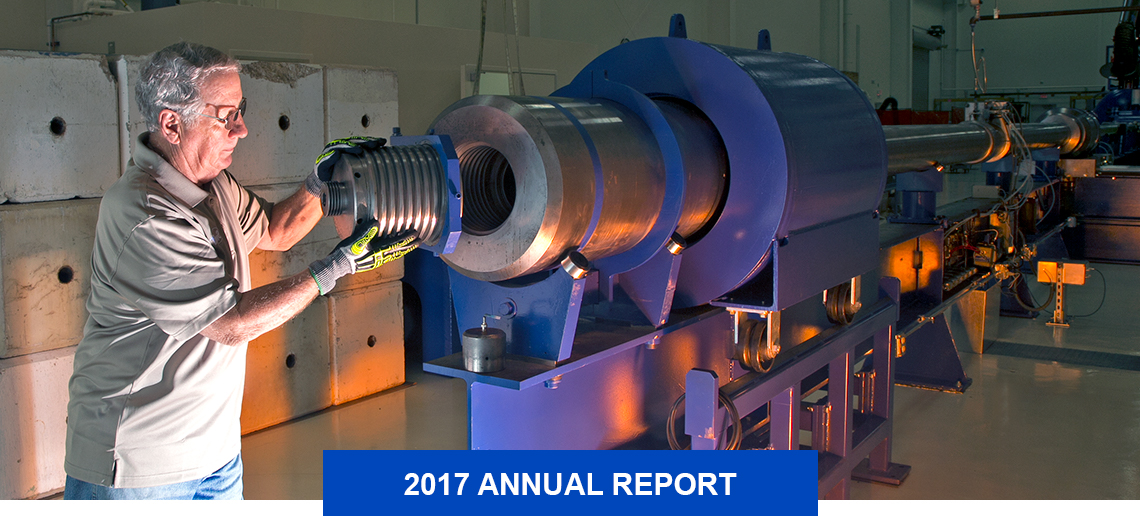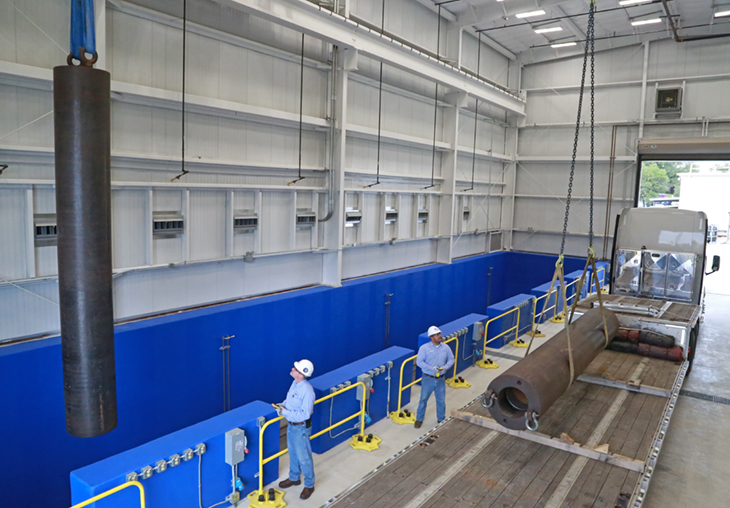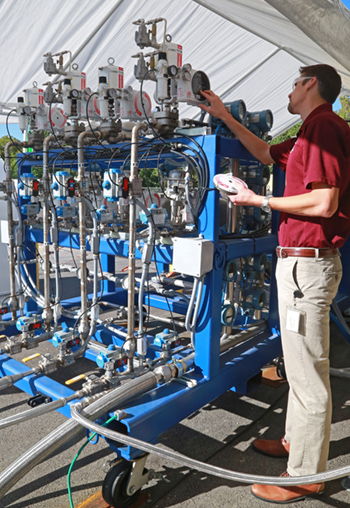
Since 1947, Southwest Research Institute’s mechanical engineering program has provided a range of research, development and evaluation services to both government and industry clients. Core research areas include electric power generation, underwater systems, space systems hardware, armored vehicles, aircraft structural integrity, and oil and gas production and transmission.
In collaboration with the U.S. Department of Energy and a major oil service company, we are developing a hydraulic fracturing process that uses natural gas as the primary fracturing fluid. This technology uses natural gas to generate a foam suitable for fracture treatments, reducing water usage by as much as 80 percent over conventional water-based techniques. This year, we evaluated liquefied natural gas and compression cycles to identify the best process for preparing the foam. We also investigated the foam’s properties at field conditions using a pilot-scale facility designed, built and operated by our engineers. These data are now available to the oil and gas industry.

High-Pressure High-Temperature Facility
Our recently completed high-pressure high-temperature facility adds infrastructure for testing and evaluating subsea equipment and systems. Our test chambers can reach pressures to 30,000 psig and temperatures up to 650 degrees F.

Fuel Mixing Facility
SwRI researchers developed a fuel mixing facility to allow combustion testing of many different, non-traditional fuel mixtures in a gas turbine.
We are developing advanced technology to inspect aging infrastructure, such as 50-year-old nuclear waste storage tanks located at the Hanford Site in Washington. In 2012, a leak was discovered in a region not inspected because of access challenges. Combining internal research and client funding, we adapted an existing system developed for nuclear power plant inspection that uses low-frequency sound waves to detect flaws. In a test on a mock-up tank, the technique detected nearly 80 percent of the flaws. Plans are underway to integrate the technology into a robotic system.
Our aircraft structural integrity program continues to help the U.S. Air Force and other military branches maintain the airworthiness of their fleets. To address promising processes for extending the structural service life of aging aircraft, we formed the Engineered Residual Stress Implementation Working Group. Now in its second year, this international group comprises 23 member organizations, with experts from U.S. defense agencies, major aircraft companies, educational institutions and other organizations. ERSI is developing, validating and qualifying critical analytical methods and quality assurance tools that will affect current maintenance inspection requirements.
Our support for the U.S. military also extends to ground-based equipment. For the U.S. Army Tank Automotive Research, Development and Engineering Center, we designed and fabricated hulls and floors for a heavy armored personnel carrier. Using both computational analysis and experimental blast testing, we validated that these components would improve vehicle safety and occupant survivability.
Today’s advanced manufacturing processes need a method to capture the relationship between key manufacturing parameters such as microstructure, defects, material properties, inspection and damage tolerance, and the final product. We recently integrated our fracture mechanics and reliability assessment software, DARWIN® (Design Assessment of Reliability with INspection), with a commercial X-ray simulation software to improve fracture risk assessments. DARWIN also provides information to the X-ray software about location-specific defects that could ultimately fail during the service life of a product.
For more information, visit mechanicalengineering.swri.org or contact Vice President Dr. Ben Thacker, +1 210 522 2051.
